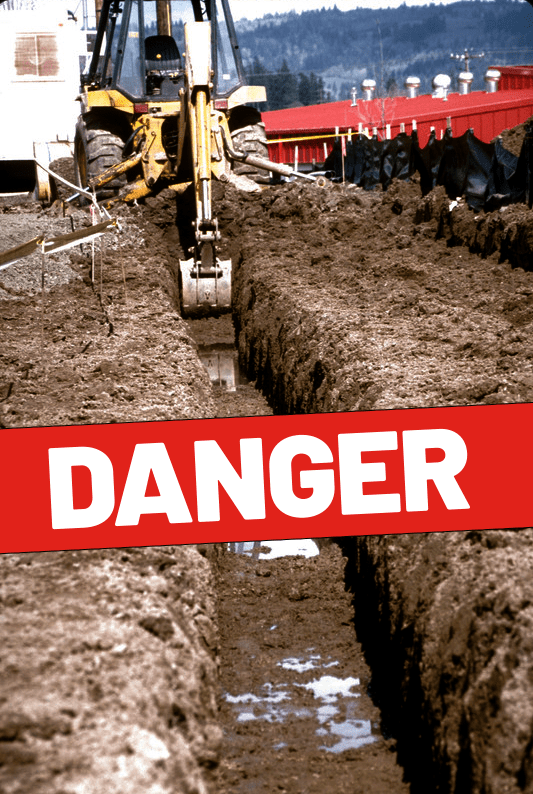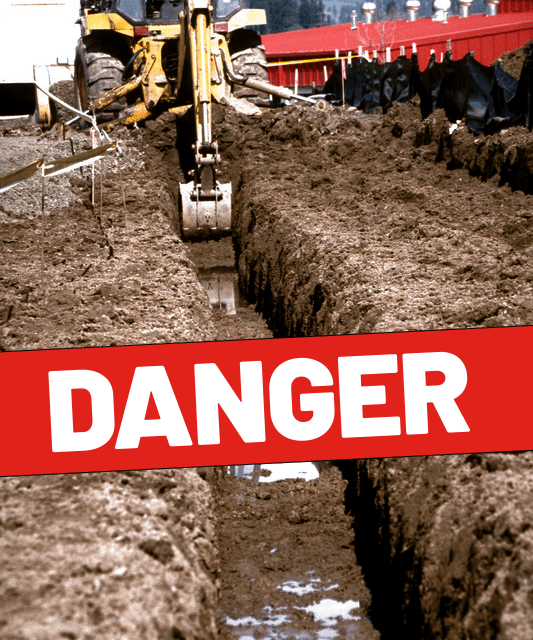
Trench collapses, or cave-ins, pose one of the greatest risks for construction-related workers. However, trenching operations can also increase the likelihood of falls and incidents involving mobile equipment. It is important to understand these dangers and what one can do to increase safety, not just for the protection of your employees—though this is certainly of the highest priority—but for your financial protection as well.
Danger by the Numbers
According to data from the Bureau of Labor Statistics, each year, about 25 workers are killed in trench-related mishaps, with cave-ins cited as the cause for 3 out of 4 construction-related fatalities. In an investigation OSHA conducted in 2003, the following statistics came to light:
- 24%—this is the percentage of trenches where protective systems were properly used; it is the same percentage as those in which protective systems were improperly used; 12% of trenches had such systems available but not in use; 64% had no system available.
- 86%—environmental conditions were a contributing factor in fatalities.
- 86%—the competent person was not on site when the fatality occurred.
- 65%—the soil type was not identified, although soil type is a major factor in cave-ins.
- 36%—this is the percentage of times cave-ins occurred on a Monday, likely due to weather conditions that had taken place over the weekend.
- 72%—this is the percentage of fatalities that occurred in trenches less than 9 feet deep.
Safety by the Method
The proper safety materials can prevent injuries and fatalities. Safety systems are required for any trench greater than 5 feet deep, while shallower trenches may not need one if a competent person declares a safety system is unnecessary. For trenches greater than 20 feet, an engineer is required to design a safety system for the site or be based on data tabulated by a professional engineer.
Further, OSHA requires that a competent person must inspect trench work in progress prior to each shift and after any changes in conditions. A competent person is defined as someone who can identify existing or possible future hazards, including conditions that are hazardous or unsanitary, soil types, required protective systems, and who is authorized to take proper steps to correct these issues.
It is also vital to keep equipment and excavated soil at least two feet away from trenches, as the weight of either can cause a collapse. For deeper trenches, benching (a method of digging in stair-steps) or sloping the edges can help to reduce the dangers of a cave-in. However, the method chosen will be determined by several factors, including soil type (sandier soil may not stair-step well) and weather, as well as the kinds of operations taking place near the trench.
Warning Workers to be Wary
Employers who want to keep their employees safe will be willing to go that extra mile to do so. Presco products provide superior protection against worksite accidents and fatalities. Used to mark off hazardous areas, our Caution and Danger Barricade Tapes warn workers to avoid dangerous areas. Our Pennant Flags mark off edges of roofs, platforms, and even trenches to help prevent falls, while our Safety Barrier Fences can serve as a temporary perimeter impediment that can effectively quarantine unsafe areas.
Make Presco’s line of safety marking products part of your trench safety system. To learn more about what Presco can do to protect your employees, visit us at https://presco.com/prescos-products-create-a-safe-workplaceenvironment/

